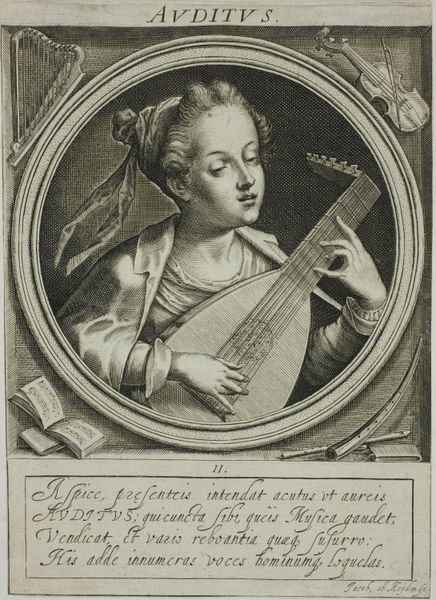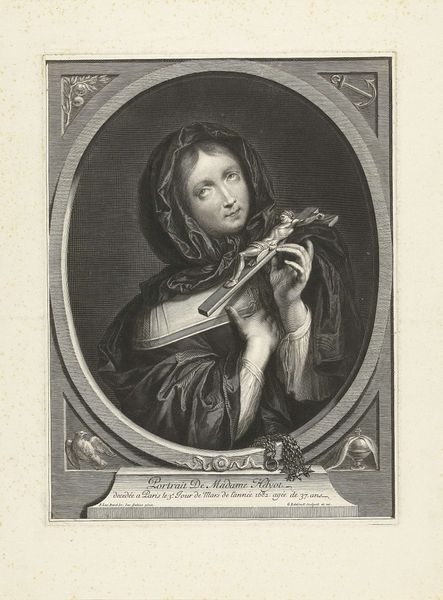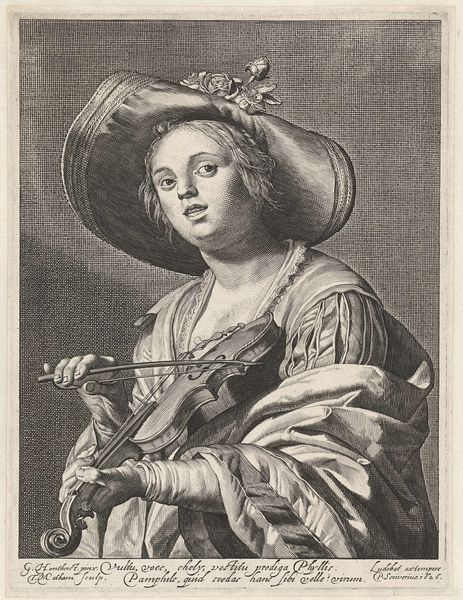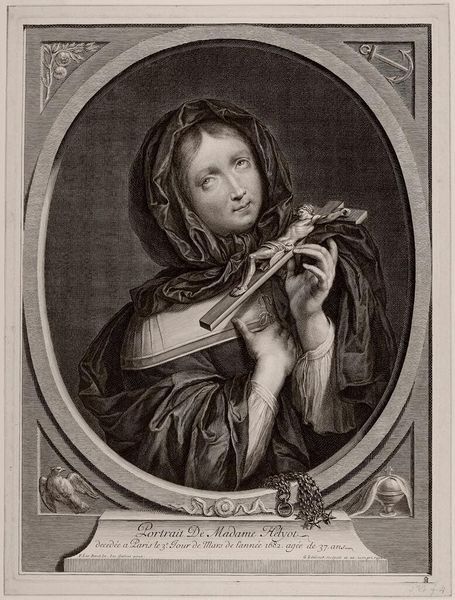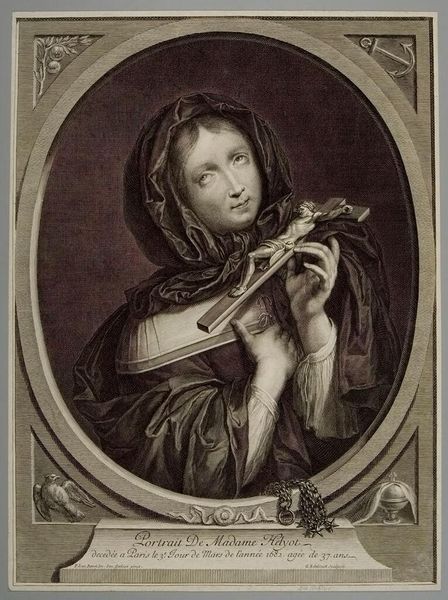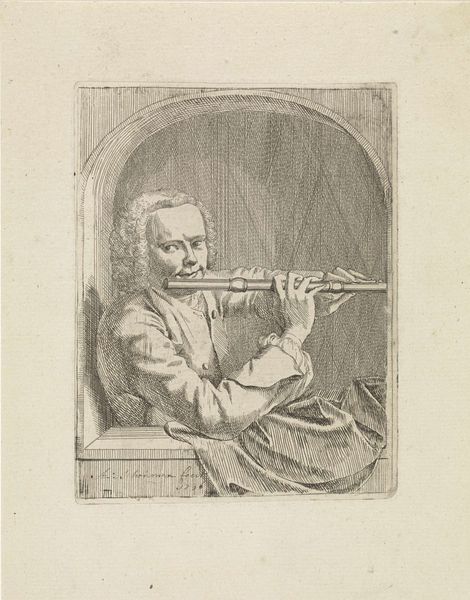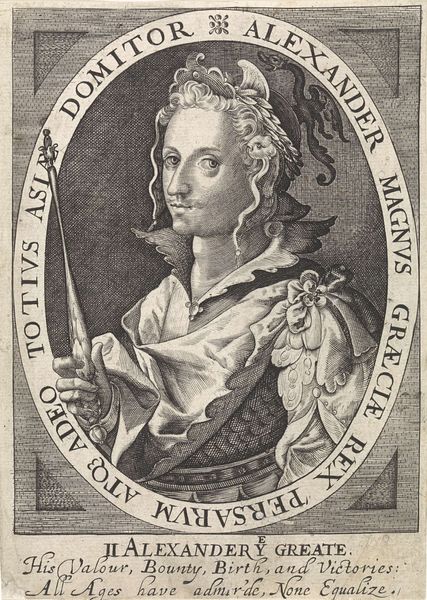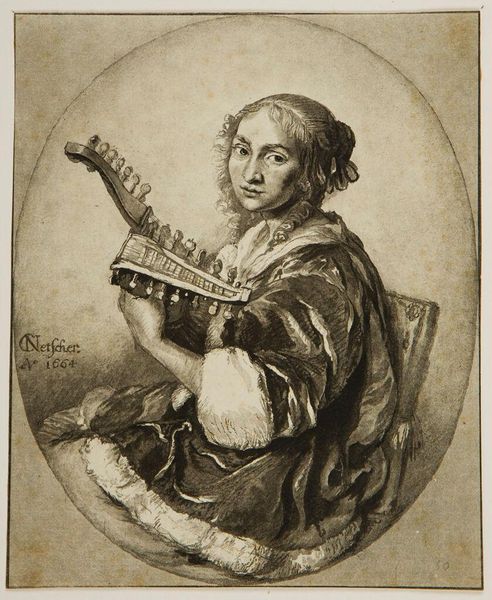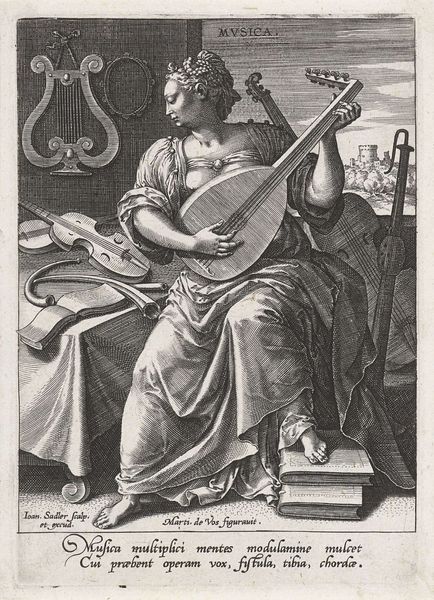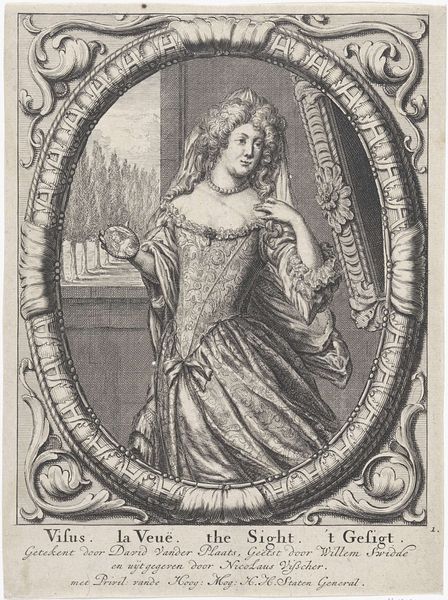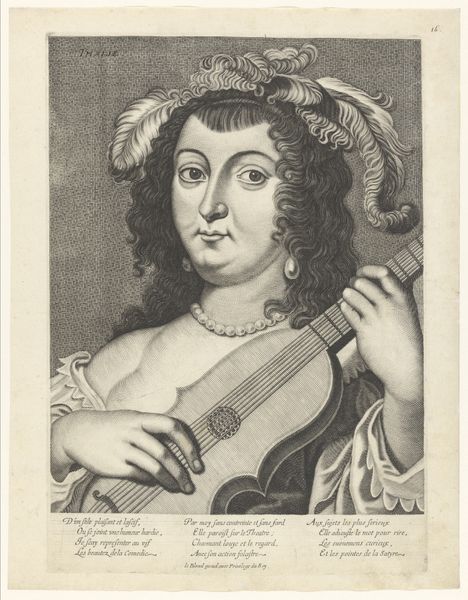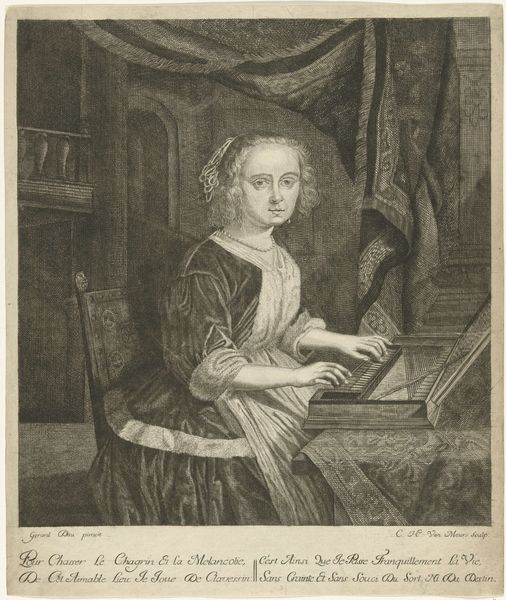
print, engraving
#
portrait
#
baroque
# print
#
old engraving style
#
portrait reference
#
portrait drawing
#
italian-renaissance
#
engraving
Dimensions: height 125 mm, width 122 mm
Copyright: Rijks Museum: Open Domain
Curator: This print, known as "Gehoor", translating to "Hearing," dates from between 1583 and 1645 and is attributed to Jacob van der Heyden. The medium is engraving. What’s your initial reaction to this work? Editor: The density of detail, rendered purely through line, is striking. I’m thinking about the process of carving into that plate and the number of impressions it generated. A reproducible image, for sure, but born from labor. Curator: Absolutely. And let’s think about what “hearing” meant in the context of the Italian Renaissance revival that also birthed Baroque sensibilities, how it wasn't just about sound, but also access to a specific social register through musical knowledge and cultivation. This print signifies so much more. Editor: The depicted instruments tell us that access would be restricted; harp, violin, flute and lute were luxury items. Note the score included, and consider the number of people able to afford to read, buy instruments or afford lessons! Curator: And this brings up issues of accessibility and education along intersectional lines – Who had the social and economic mobility to perform and even contemplate participating in these acts? Were they perceived, gendered, or classed as deviant for engaging or were they given a higher value for not? Editor: The act of creation itself also required a workshop with equipment, skilled artisans producing paper and ink, the infrastructure for sales and distribution, creating an entirely social hierarchy around "high culture." The act of commodification created “taste”, a cultural currency which defines art consumption and access still today. Curator: Precisely, it creates not just the soundscape of the era, but a carefully constructed performance of the self, available only to certain privileged actors within that soundscape. Consider the historical accounts regarding artists and performers; are these narratives built to restrict voices while giving prominence to other, culturally valued performances? Editor: Which, ultimately, begs the question: whose voices were amplified and whose were systematically silenced within that so-called harmony? Thank you, that was very insightful, how social performances are inextricably tied to class and economy of an age. Curator: The pleasure was mine; recognizing how deeply ingrained the systemic inequalities are in art forms requires more nuanced approaches in studying this discipline and period.
Comments
No comments
Be the first to comment and join the conversation on the ultimate creative platform.
